Shoot a compound bow long enough, and eventually you’re going to encounter archers talking about the merits of back tension releases.
What are they? And how do they work?
First, let’s discuss what is meant by the term “back tension.”
Bowhunters and target archers who use mechanical release aids equipped with triggers are highly likely to at some point encounter problems with anticipation. When you pull the trigger with your index finger, or depress it with your thumb, you know when the release is going to fire, and so it’s very easy to anticipate that moment. That can cause you to flinch – drop your bow arm, kick your release hand out to the side, etc. Flinching leads to poor shots.
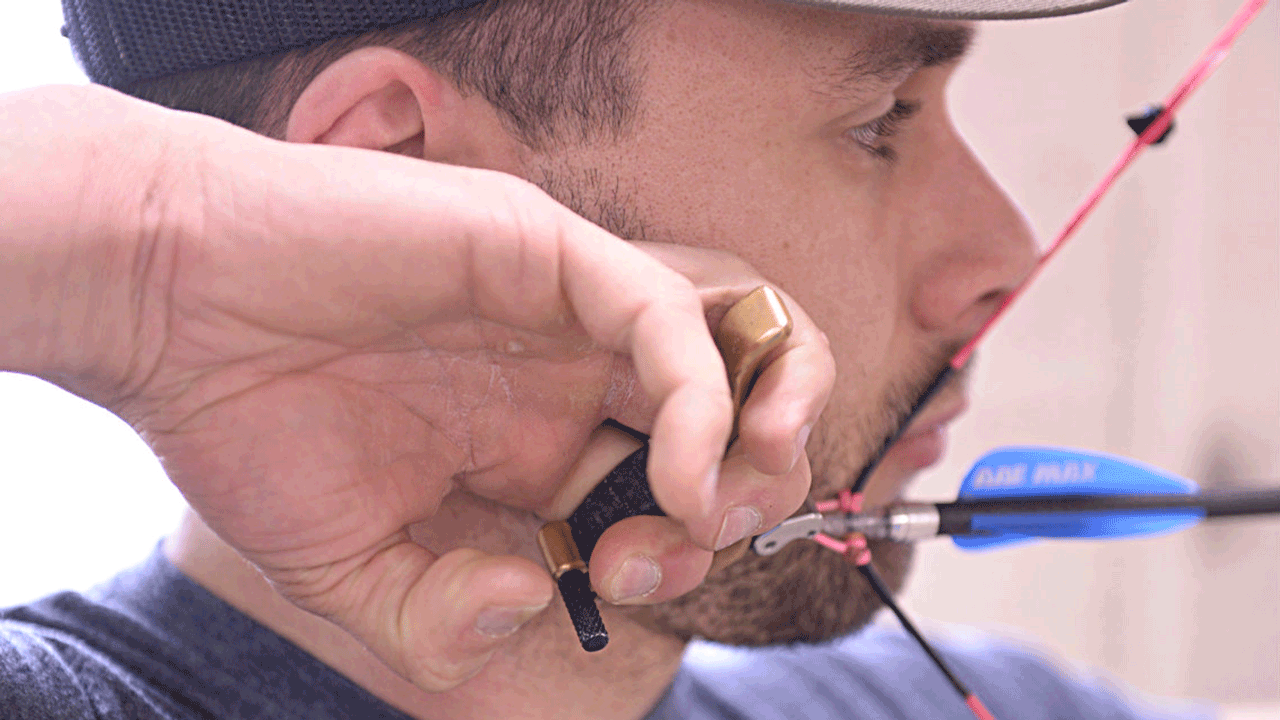
An archer at full draw using a hinge-style, back tension release.
Years ago, archers developed a way to set off trigger releases without simply moving a finger. Instead, an archer comes to full draw and then slowly squeezes his or her shoulder blades toward one another by increasing the tension in the back muscles. This action pulls the release arm backward, which forces the index finger or thumb to hit the release trigger.
This is how back tension is used to activate a mechanical release. Well, even though this helped alleviate the shot anticipation some, archers still could have a pretty good idea when the trigger was going to be activated. After a while, the shots aren’t as much of a surprise as they are in the beginning.
This led to the creation of so-called back tension releases. Basically, these back tension releases rely heavily on back tension in order to fire, since they don’t have traditional triggers. And there are two basic types of back tension releases.
First, there are the hinge releases. This is a hand-held back tension release where the whole handle is essentially the trigger. A sear holds in place a hook that connects to the D-loop. As the handle rotates away from the bow, the sear releases the hook and the arrow is launched.
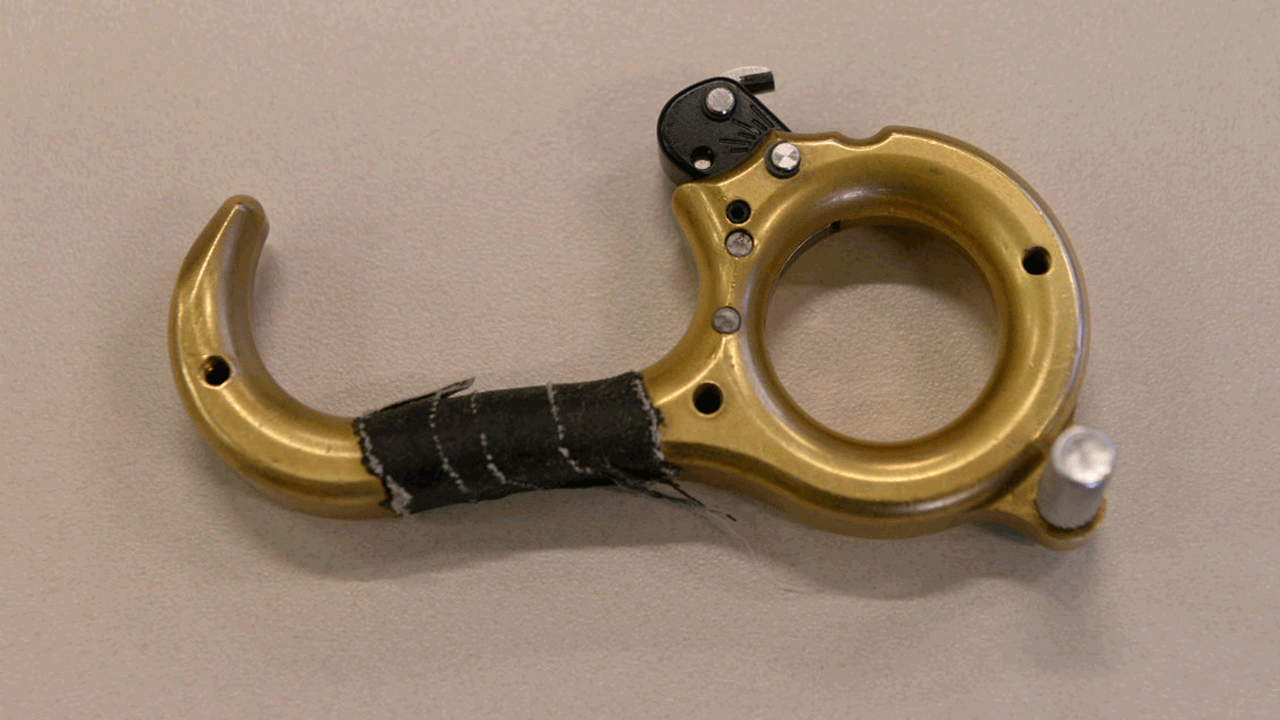
Hinge-style back tension release.
Back tension comes into play with hinge releases again when the archer reaches full draw. Once at anchor, the archer can start squeezing the shoulder blades together, which pulls the release arm backward. That movement causes the release handle to rotate and ultimately fire the arrow.
Another way to employ back tension with a hinge release is to come to full draw and lock the tension in your back muscles in place at anchor. Then you can relax your wrist, which causes the release handle to rotate and fire. Maintaining back tension is what allows this release method to work. If you ease the tension as you relax your wrist, the release won’t rotate. Your whole bow arm will simply creep forward.
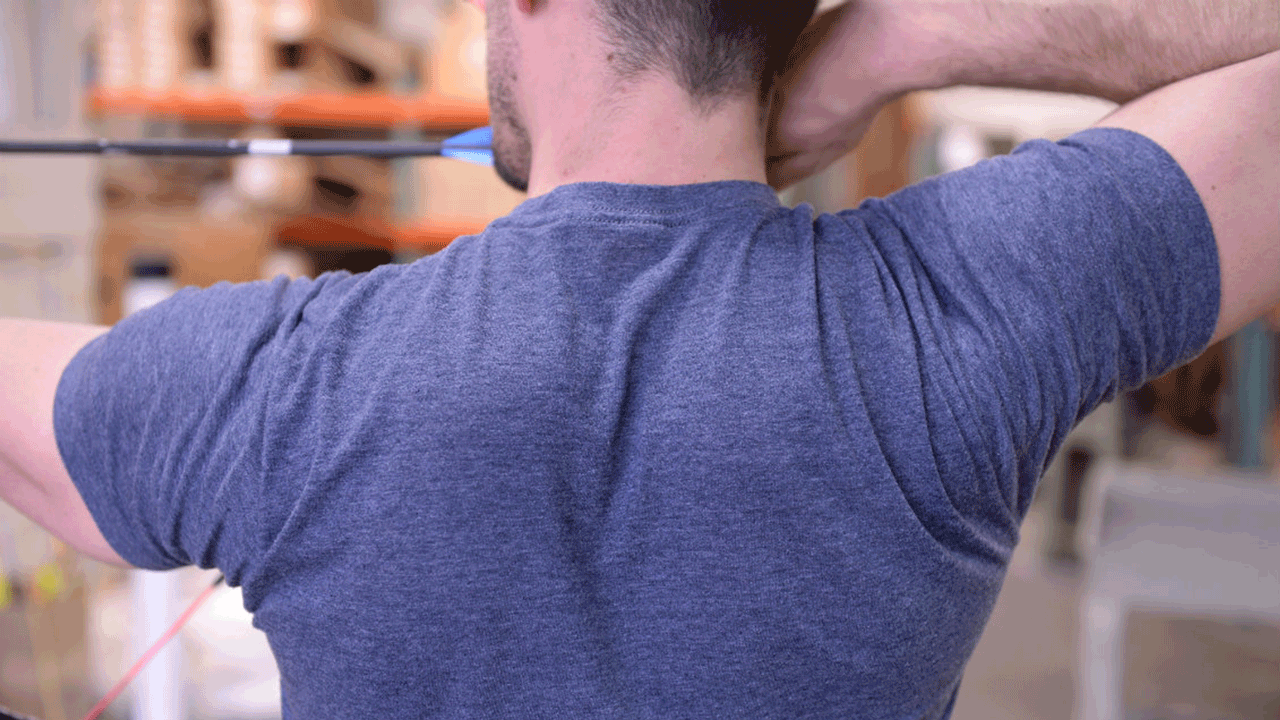
Back tension releases rely on an archer using the muscles in the back, rather than a trigger, to activate the release.
With a hinge, there’s a better chance of achieving a surprise shot than with a trigger. It might seem like having the shot surprise you would be a bad thing, because if you’re not exactly sure when the bow will fire, how can you be sure where the arrow will go?
Well, to be sure, once you reach anchor, you’ve got to focus on aiming. Put that sight pin where you want it and hold it there until the bow fires. That’s how you know where the arrow will go, and so knowing when the release fires is not critical. In fact, your accuracy is usually better when you don’t know.
With a surprise shot, there is no chance to flinch or tense up in any way in anticipation of the shot. This means the shot is very fluid and natural. You’re taking you out of the equation. For many of us, that’s key.
The truth is, knowing when the release will fire isn’t a bad thing if you can control your body not to react. Tim Gillingham is one of the best archers in the world, and he uses an index finger release to perfection. He can control his body to do the same thing every time he hits the trigger. That’s very hard to do.
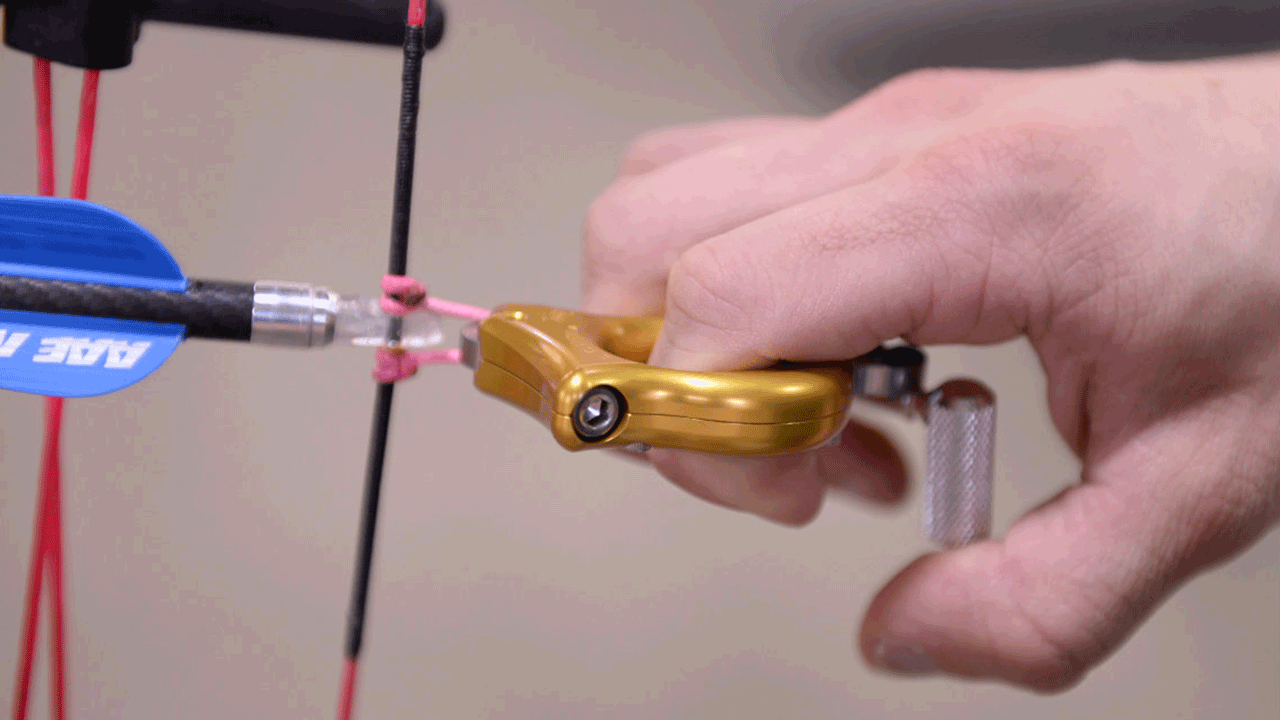
Here’s a tension-activated release hooked to the D loop.
For most of us, it’s easier to have a consistent shot if we can trick our bodies by surprising them with the shot. If the release goes off when we’re not expecting it, then we can’t flinch to affect the shot. Wherever the pin is, that’s where the arrow is going.
So all of this might sound a little scary to bowhunters shooting at animals that can move at any time during the shot process. Well, hinge releases typically can be set to totally surprise you, or give you a little advance notice that the shot is coming.
On most hinge releases, you can set the sear with or without an audible click. The click is a small depression in the sear the hook drops into right before it is released. You can move the sear to set it to fire where it’s most comfortable to you in your shot process. When you hear the click, you know the release is just about to fire.
For some archers, however, hearing that click causes them to flinch, or to tense up. So they don’t want to know when the shot is coming. They want the full surprise, and so they are focused on aiming the instant them come to anchor.
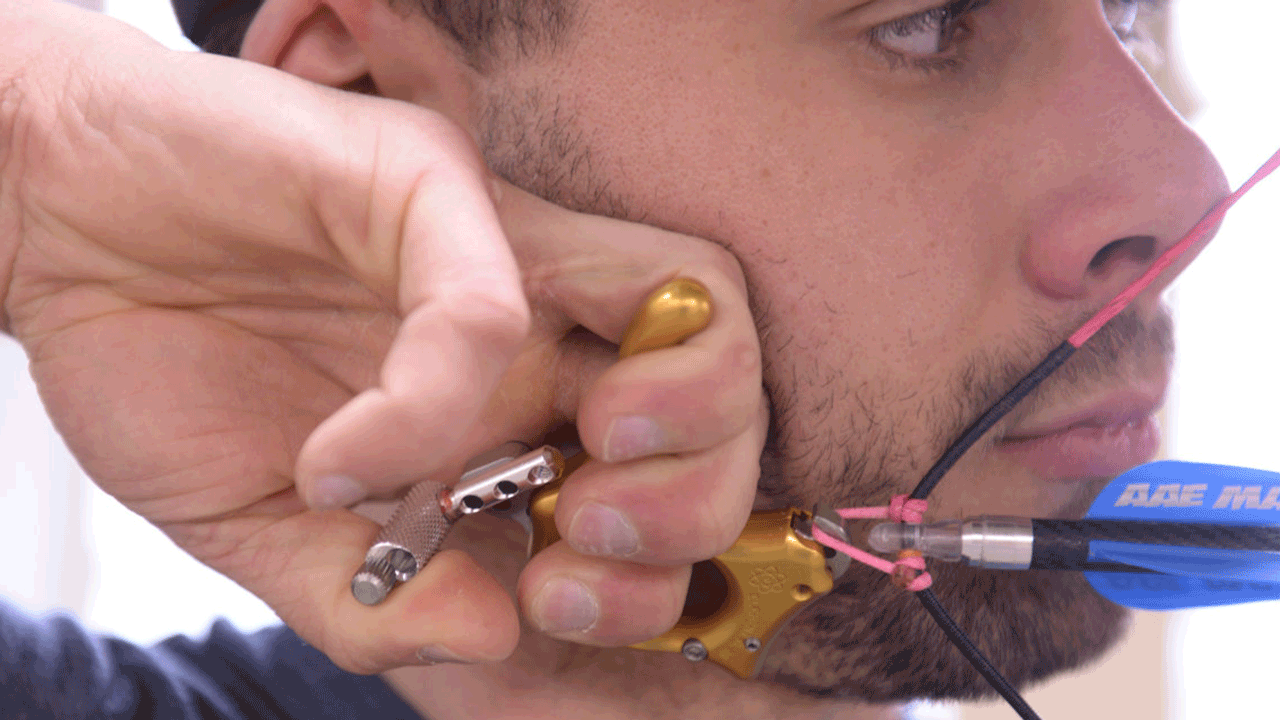
A tension-activated release has a safety that’s depressed with the thumb to keep it from firing until an archer reaches full draw.
The second type of back tension release is actually the only true tension release. It’s called a tension-activated release. It has no trigger that you can manipulate. Technically, you could just roll your hand backwards on a hinge release to make it fire on command.
With a tension activated release, the only way to set it off is to pull through the shot. You increase the tension between the release head and the bowstring. So this is a release that is set to an individual’s specific holding weight at full draw. Whatever that weight is, you’d set this release to fire at a bit higher weight.
As we all know, the holding weight of a compound bow is much less than the peak draw weight. So a tension-activated release set to fire at about the holding weight would certainly fire during the draw cycle. That’s why these releases all come with safety levers that you hold down with your thumb while drawing. Once you come to anchor, you release the safety, and begin pulling through the shot.
You can set the release weight so that you only have to pull a little before it fires, or so that you have to pull quite a bit to set it off. A heavier release weight would force the archer to maintain form longer.
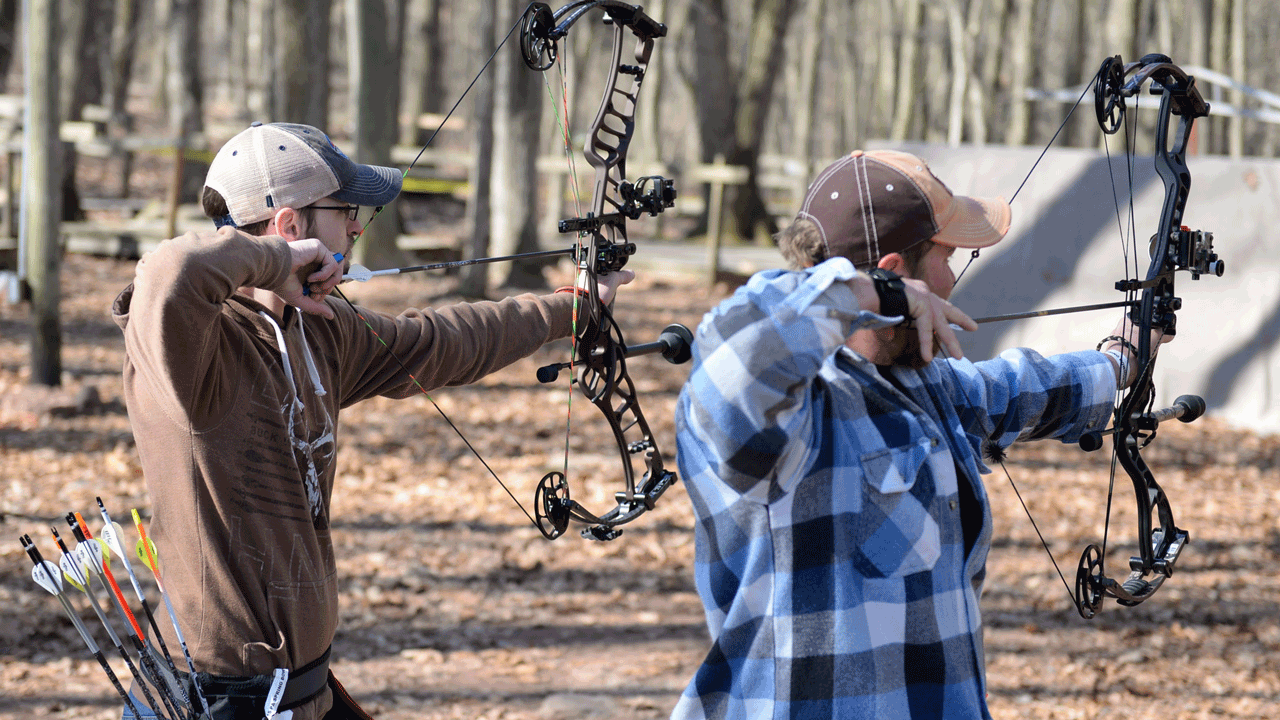
Many archers believe a back tension release gives them a better surprise shot, which reduces the chances of flinching.
Tension-activated releases are excellent tools for curing target panic since there is no trigger. It’s nearly impossible to flinch with one of these back tension releases, because you’re using large muscle groups in your back and arms to get it to fire. These releases force you to increase the tension in your back and pull through the shot, which is exactly what you stop doing when you flinch.
Even if you have no intention of ever hunting with a tension-activated release, it’s a good one to have for practice sessions. Anytime you feel like you are anticipating the shot with your normal hunting release, break out the tension release for some practice arrows. You should find this will help keep you from flinching with your normal release.
You can find both hinge and tension-activated releases in two-, three- and four-finger models. This describes the number of fingers that you place on the handle during the shot process. Which one you choose is entirely up to you. Go with whatever feels most natural.
Be sure to check out Lancaster Archery Supply for an extensive selection of back tension releases.

 By
By 



